Showing Spotlights 41 - 48 of 203 in category All (newest first):
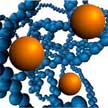 Various additives are added to plastics to either improve processability, change product properties or protect them against thermal, UV or light influences. In the case of a polymer nanocomposite, the additives have at least one dimension of less than 100 nm and can be found in the form of platelets, fibres or particles. They primarily serve to improve tensile strength, thermoformability, flame retardancy, optical and electrical properties, and the barrier properties of the plastic into which they are incorporated.
Various additives are added to plastics to either improve processability, change product properties or protect them against thermal, UV or light influences. In the case of a polymer nanocomposite, the additives have at least one dimension of less than 100 nm and can be found in the form of platelets, fibres or particles. They primarily serve to improve tensile strength, thermoformability, flame retardancy, optical and electrical properties, and the barrier properties of the plastic into which they are incorporated.
Mar 10th, 2021
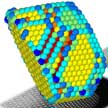 Gold nanoparticles are of great importance for a wide range of industrial processes such as CO oxidation, water-gas shift reactions and oxygen reduction at the cathode of hydrogen fuel cells. Scientists investigated the three-dimensional atomic structure of gold nanoparticles at high temperatures. By combining two powerful techniques, electron tomography with atom counting, researchers tracked the morphology changes in gold nanoparticles when heated.
Gold nanoparticles are of great importance for a wide range of industrial processes such as CO oxidation, water-gas shift reactions and oxygen reduction at the cathode of hydrogen fuel cells. Scientists investigated the three-dimensional atomic structure of gold nanoparticles at high temperatures. By combining two powerful techniques, electron tomography with atom counting, researchers tracked the morphology changes in gold nanoparticles when heated.
Jan 22nd, 2021
 Virtual reality (VR) and augmented reality (AR) are some of the hottest multidisciplinary technology trends right now, integrating computer, various sensor, graphic image, communication, measurement and control multimedia, artificial intelligence, and other technologies. Interactive electronic textiles will provide suitable platforms for VR/AR applications to provide a full range of sensory perceptions. Intrinsic conductive nanomaterials such as carbon nanotubes and metallic nanowires as well as nanoscale devices such as triboelectric nanogenerators are key to developing these electronic textiles.
Virtual reality (VR) and augmented reality (AR) are some of the hottest multidisciplinary technology trends right now, integrating computer, various sensor, graphic image, communication, measurement and control multimedia, artificial intelligence, and other technologies. Interactive electronic textiles will provide suitable platforms for VR/AR applications to provide a full range of sensory perceptions. Intrinsic conductive nanomaterials such as carbon nanotubes and metallic nanowires as well as nanoscale devices such as triboelectric nanogenerators are key to developing these electronic textiles.
Dec 7th, 2020
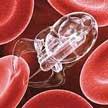 The ability to communicate new advances in science and technology has never been more important, and in that regard innovations with nanotechnology are growing more rapidly than ever with benefits to both society and the economy. However, for many consumers and the general public, the very idea of nanotechnology is both a wonder and an enigma. But how do we keep our society engaged with new nanotechnology at a time when everyone is more discerning? Well, one approach is to use storytelling.
The ability to communicate new advances in science and technology has never been more important, and in that regard innovations with nanotechnology are growing more rapidly than ever with benefits to both society and the economy. However, for many consumers and the general public, the very idea of nanotechnology is both a wonder and an enigma. But how do we keep our society engaged with new nanotechnology at a time when everyone is more discerning? Well, one approach is to use storytelling.
Oct 15th, 2020
 Radiative cooling is a passive cooling strategy for lowering the temperature of an object without consuming energy or emitting pollution. However, this cooling method becomes ineffective when heat accumulates continuously in an enclosed space, such as a stationary vehicle exposed to direct sunlight. Researchers propose a Janus thermal emitter that acts as a selective emitter on the top side and a broadband emitter on the bottom side. This design effectively draws heat from an inner space and the surface, because the bottom side can absorb thermal input in a broad spectral range, while the top side emits heat into space without disturbing ambient radiation.
Radiative cooling is a passive cooling strategy for lowering the temperature of an object without consuming energy or emitting pollution. However, this cooling method becomes ineffective when heat accumulates continuously in an enclosed space, such as a stationary vehicle exposed to direct sunlight. Researchers propose a Janus thermal emitter that acts as a selective emitter on the top side and a broadband emitter on the bottom side. This design effectively draws heat from an inner space and the surface, because the bottom side can absorb thermal input in a broad spectral range, while the top side emits heat into space without disturbing ambient radiation.
Sep 7th, 2020
 To birds, trees and sky reflected in glass appear to be habitat. They fly into windows at high speeds, and the loss of life is staggering. Unlike humans, most birds can see UV light. It therefore stands to reason that applying UV-reflecting coatings or patterns on windows and glass buildings can be particularly advantageous to prevent bird strikes. Tuning the UV reflectance properties of window glass (or any other surface for that matter) could result in higher UV reflectance that could be noticed by birds and potentially reduce bird-strike incidences, particularly in high-rise buildings and airplanes.
To birds, trees and sky reflected in glass appear to be habitat. They fly into windows at high speeds, and the loss of life is staggering. Unlike humans, most birds can see UV light. It therefore stands to reason that applying UV-reflecting coatings or patterns on windows and glass buildings can be particularly advantageous to prevent bird strikes. Tuning the UV reflectance properties of window glass (or any other surface for that matter) could result in higher UV reflectance that could be noticed by birds and potentially reduce bird-strike incidences, particularly in high-rise buildings and airplanes.
Aug 11th, 2020
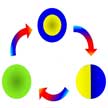 Bismuth antimonide (BiSb) is an important material in nanoelectronics as a topological insulator and as a thermoelectric material. However, some of its thermal properties are still mostly unknown at the nanoscale. This is an issue because in order for BiSb to exhibit its thermoelectric properties it has to be an alloy. But at the nanoscale, it is difficult to mix Bi and Sb. New findings provide the phase diagram of bismuth antimonide at nanoscale sizes for different types of morphologies like sphere, rod, wire, and film, thereby filling the knowledge gap about the thermal properties of BiSb at the nanoscale.
Bismuth antimonide (BiSb) is an important material in nanoelectronics as a topological insulator and as a thermoelectric material. However, some of its thermal properties are still mostly unknown at the nanoscale. This is an issue because in order for BiSb to exhibit its thermoelectric properties it has to be an alloy. But at the nanoscale, it is difficult to mix Bi and Sb. New findings provide the phase diagram of bismuth antimonide at nanoscale sizes for different types of morphologies like sphere, rod, wire, and film, thereby filling the knowledge gap about the thermal properties of BiSb at the nanoscale.
Jun 5th, 2020
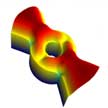 More than 25 years since the discovery of superconductivity in strontium ruthanate (SRO), understanding the properties of this material remains as challenging as ever. Researchers now demonstrated that a SRO sample can allow the two energetically degenerate condensates of Cooper-pairs with opposite momentum to segregate in domains, with a domain wall in between where chirality changes. To use the analogy to Moses parting the sea, here the Red Sea would spontaneously part into 'magenta' and 'yellow' seas on either side.
More than 25 years since the discovery of superconductivity in strontium ruthanate (SRO), understanding the properties of this material remains as challenging as ever. Researchers now demonstrated that a SRO sample can allow the two energetically degenerate condensates of Cooper-pairs with opposite momentum to segregate in domains, with a domain wall in between where chirality changes. To use the analogy to Moses parting the sea, here the Red Sea would spontaneously part into 'magenta' and 'yellow' seas on either side.
May 27th, 2020
 Various additives are added to plastics to either improve processability, change product properties or protect them against thermal, UV or light influences. In the case of a polymer nanocomposite, the additives have at least one dimension of less than 100 nm and can be found in the form of platelets, fibres or particles. They primarily serve to improve tensile strength, thermoformability, flame retardancy, optical and electrical properties, and the barrier properties of the plastic into which they are incorporated.
Various additives are added to plastics to either improve processability, change product properties or protect them against thermal, UV or light influences. In the case of a polymer nanocomposite, the additives have at least one dimension of less than 100 nm and can be found in the form of platelets, fibres or particles. They primarily serve to improve tensile strength, thermoformability, flame retardancy, optical and electrical properties, and the barrier properties of the plastic into which they are incorporated.
 Subscribe to our Nanotechnology Spotlight feed
Subscribe to our Nanotechnology Spotlight feed





